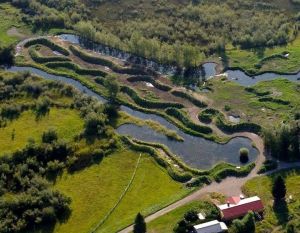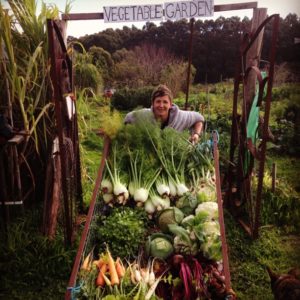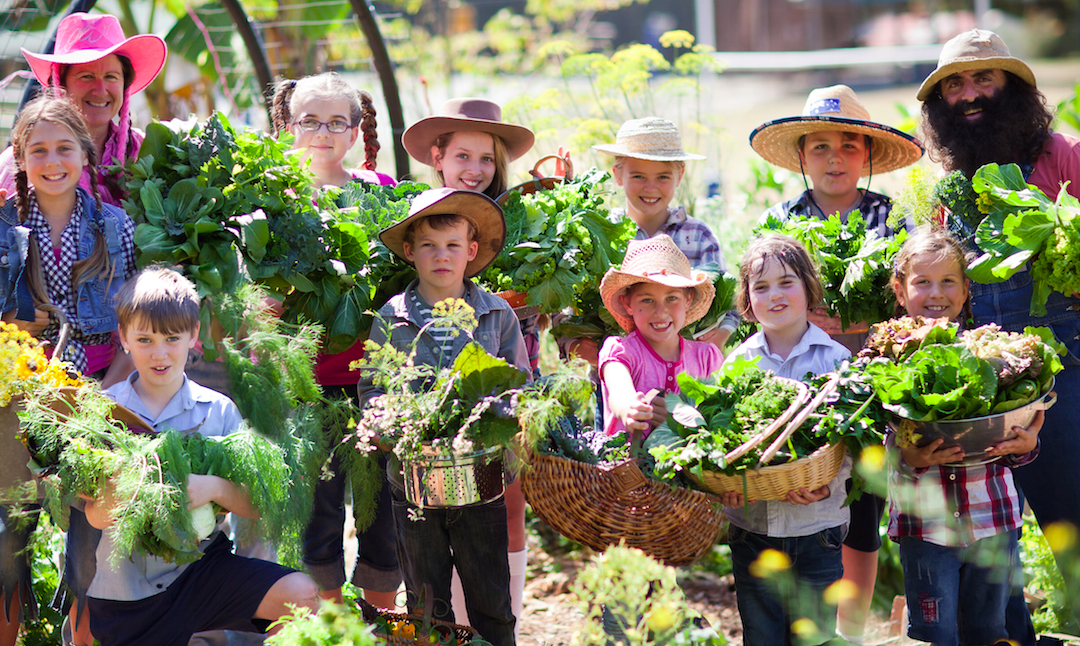What is Permaculture ???
If you’ve landed here, you’ve probably heard about permaculture. Whether in a TV report, a book or a documentary (the excellent French movie “Tomorrow” by Mélanie Laurent and Cyril Dion for example). Permaculture is more often described than explained.
In our Les Sourciers’ project, we use certain permaculture principles ! However, I am not going to give here my definition of permaculture, but rather try to offer you some lines of thought that will help you to make an opinion on the subject. It is already difficult to define permaculture in a few pages, so imagine in a few lines !
If the parents of permaculture, Bill Mollison and David Holmgrem, have defined fundamental principles, permaculture can not be summed up simply through an exhaustive technical list. To understand it, it is necessary first of all to repeat some fundamental concepts of biology and agronomy that we sometimes think we know without understanding the real meaning. What is an ecologist ? A farmer ? What role can food play in the functioning of our society ? These are essential questions that permaculture tries to answer !


The ecosystem brings together the biocenosis (living beings) and the biotope (their habitat) into a concept that can be studied. The discipline we have all heard about, ecology, seeks to study the relationships between living things within an ecosystem, from large mammals to microscopic bacteria. These relationships can be competitive as we often hear, but what is less known is that 80% of life is collaborative ! Plants, animals and microbes help each other and coexist in a huge broth that tries to survive and adapt to changes in the biotope (climate, rising waters, landforms, etc.).
What is the connection with agriculture? Well for the agronomist, the cultivated field is an ecosystem like any other, except that it has been transformed for production purposes. It is called “agrosystem“.
Basically, the agrosystem is composed of several key elements that must be understood in order to preserve it and produce in a sustainable way :
- the superficial horizon where the seed and the roots develop;
- the humus, soil reservoir that aggregates the organic matter decomposed on the surface and the ions of the mother stone in a big complex to feed …
- … soil biodiversity, including earthworms that move matter and aerate soil, as well as bacteria responsible for the various chemical changes in the soil;
- the plant of course with its different organs (roots, stem, leaves, flowers / fruits);
- the climate ;
- the surrounding biodiversity and their habitat: hedges, rodents, raptors, insects etc.
In the 60s and 90s, thanks to previous advances in mechanization, chemical fertilizers and varietal selection, agriculture is changing and the notion of field is simplified to facilitate the work of the farmer. Consolidation that will destroy the many quaint little groves in favor of large openfields adapted to the passage of the tractor : It’s the green revolution. If the yields per area will not be greatly improved, yields per farmer will be multiplied! What is called “conventional farming” is this very particular way of conceiving the agrosystem, which has summarized the field to the plant, the superficial horizon and the climate. Humus and biodiversity, interdependent and responsible for the good health of the soil have been replaced by chemical inputs (fertilizers, pesticides, herbicides etc.).
This change of treatment will lead to a gradual reduction of soil biodiversity and the surrounding area, which are now considered unnecessary and even dangerous because they are more difficult to control. This is what Claude Bourguignon hears when he speaks of “death of the soil”.

What is the relationship with permaculture you may ask ? Well, the latter is precisely born as opposed to this system. Before the green revolution, the ecological vision of agriculture was extremely rudimentary. In truth, most of the famous permaculture techniques are adaptations of old farming techniques that had been previously proven and that the permacultor includes in a systemic view.
Simply put, where our great-grandparents engaged in peasant agriculture that was transmitted both by necessity and tradition, today’s permaculture tries to better control the tenants and culminate in its field.
No question here of praying in the morning to heal our plants ! We need to observe our environment, understand, experiment and be inspired to find solutions. Compost and animal droppings will be fertilizers, and the earthworms will be tractors! No longer a question of fighting pests, we now seek to find a balance by favoring the arrival of predators and by reinforcing the natural defenses of plants. We do with and not against, less quickly but better.
Some summarize it to small gardens of less than 5 hectares without a tractor. However, one of the great references in the field, Mark Shepard, has created a system in agroforestry on more than 100 hectares! You may have heard about butte crops, very popular in France. But in North Africa, it’s the opposite, it is cultivated in the hollow to conserve moisture. Not to mention Sepp Holzer (photo of his farm above), this Austrian farmer who grows oranges at more than 1000m altitude in high mountains!
One of the fundamental principles of permaculture is A-DAP-TA-TION. There are no specifications or manual. To install your garden, you have to observe the land, what type of soil do you have? Are there hedges in the vicinity ? Bats or birds ? Is the soil flat or sloping ?
All permaculturists will tell you, the key to a beautiful permaculture garden is experience ! Unfortunately, it is quite expensive to train in France. But if you have the means to go abroad, many farmers are ready to teach you what they know in exchange for a simple helping hand. Some even will host you ! About teaching, we will finally be able to approach, after ecology and agricultural production, the third great prism of study of permaculture: the social.
There are no rules in permaculture.
It’s no longer a secret that the farmer is unhappy today. Despite his passion, a farmer commits suicide every two days in France, but the conventional system, based on a vicious circle of investments and debts through the illusory race of the COM-PE-TI-TI-VI-TE does not seem to manage to stem the problem. Permaculture is based on food self-sufficiency, the diversity of cultivated species, the increase in surface yields on human-sized farms, ecosystem services and on the short circuits in order to promote self help and improve the living environment of farmers.
Being a farmer is not always fun, but it is always more fun when you do not live with the fear of seeing the price of its monoculture brutally fall, when it is not the help of the governments that stop overnight.
Permaculture is a bit of all of this : proposing an alternative, reintroducing ecology into production, acquiring a form of autonomy, creating a social bond and making farmers happy. Of course there would still be so much to say, but I hope this brief overview will make you want to know more !


